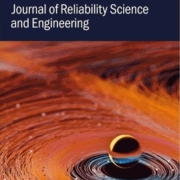Review paper on AI system reliability is accepted by Journal of Reliability Science and Engineering
As the potential applications of AI continue to expand, a central question remains unresolved: will users trust and adopt AI-powered technologies? Since AI’s promise closely hinges on the perceptions of its trustworthiness, how to guarantee the reliability and trustworthiness of AI plays a fundamental role in fostering its broad adoptions in practice. However, the theories, mathematical models, and methods in reliability engineering and risk management have not kept pace with the rapid technological progress in AI. As a result, the lack of essential components (e.g., reliability, trustworthiness) in the resultant models has emerged as a major roadblock to regulatory approval and widespread adoptions of AI-powered solutions in high-stakes decision environments, such as healthcare, aviation, finance, nuclear power plant, to name a few. To fully harness AI’s power for automating decision making in these safety-critical applications, it is essential to manage expectations for what AI can realistically deliver to build appropriate levels of trust. In this paper, we focus on functional reliability of AI systems developed through supervised learning and discuss the unique characteristics of AI systems that necessitate the development of specialized reliability engineering and risk management theories and methods to create functionally reliable AI systems. Next, we thoroughly review five prevalent engineering mechanisms in the existing literature for approaching functionally reliable and trustworthy AI, including uncertainty quantification (UQ) composed of model-based UQ and model-agnostic conformal prediction, failure prediction, learning with abstention, formal verification, and knowledge-enabled AI. Furthermore, we outline several research challenges and opportunities related to the development of reliability engineering and trustworthiness assurance methods for AI systems. Our research aims to deepen the understanding of reliability and trustworthiness issues associated with AI systems, and spark researchers in the field of risk and reliability engineering and beyond to contribute to this area of study with emerging importance.



